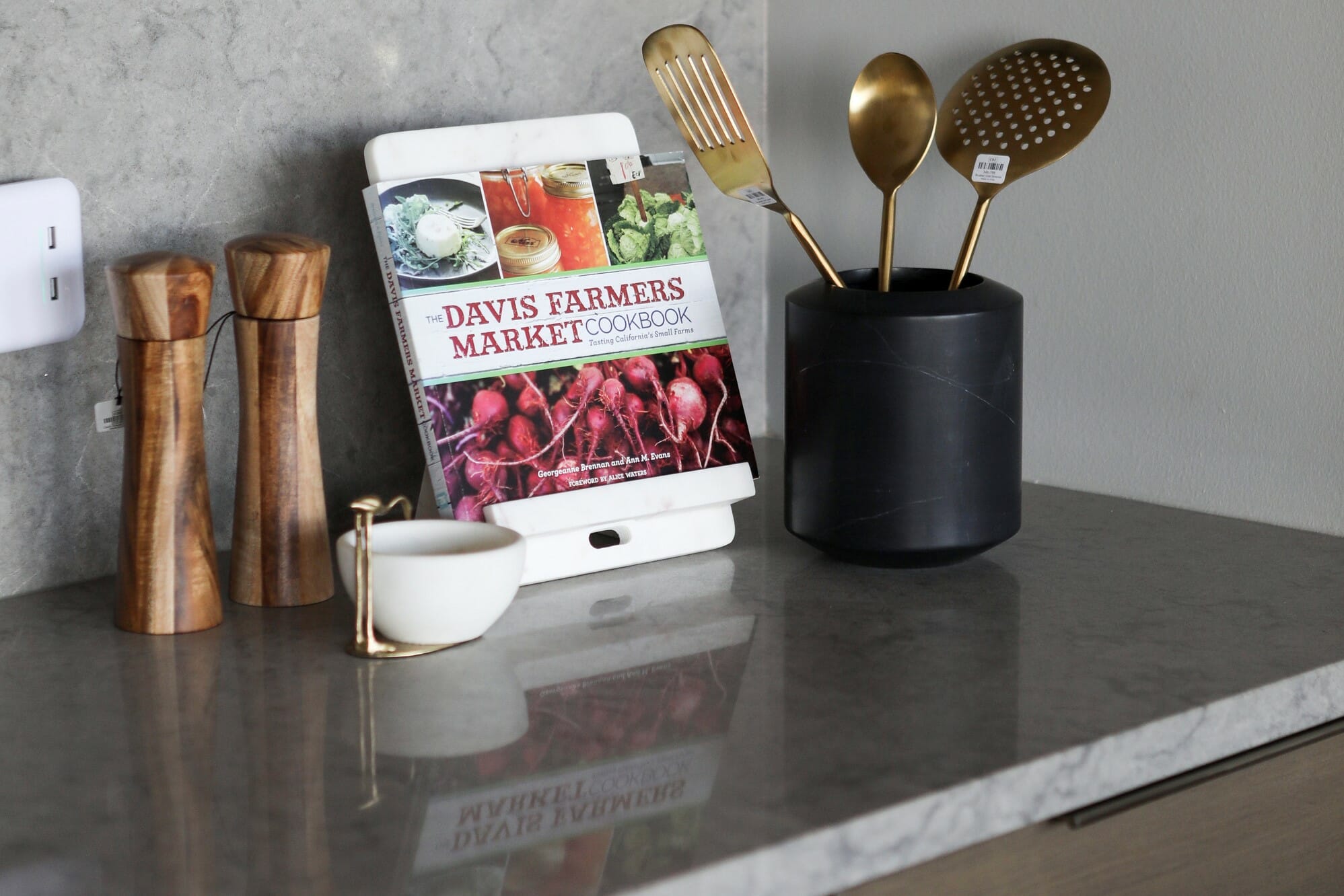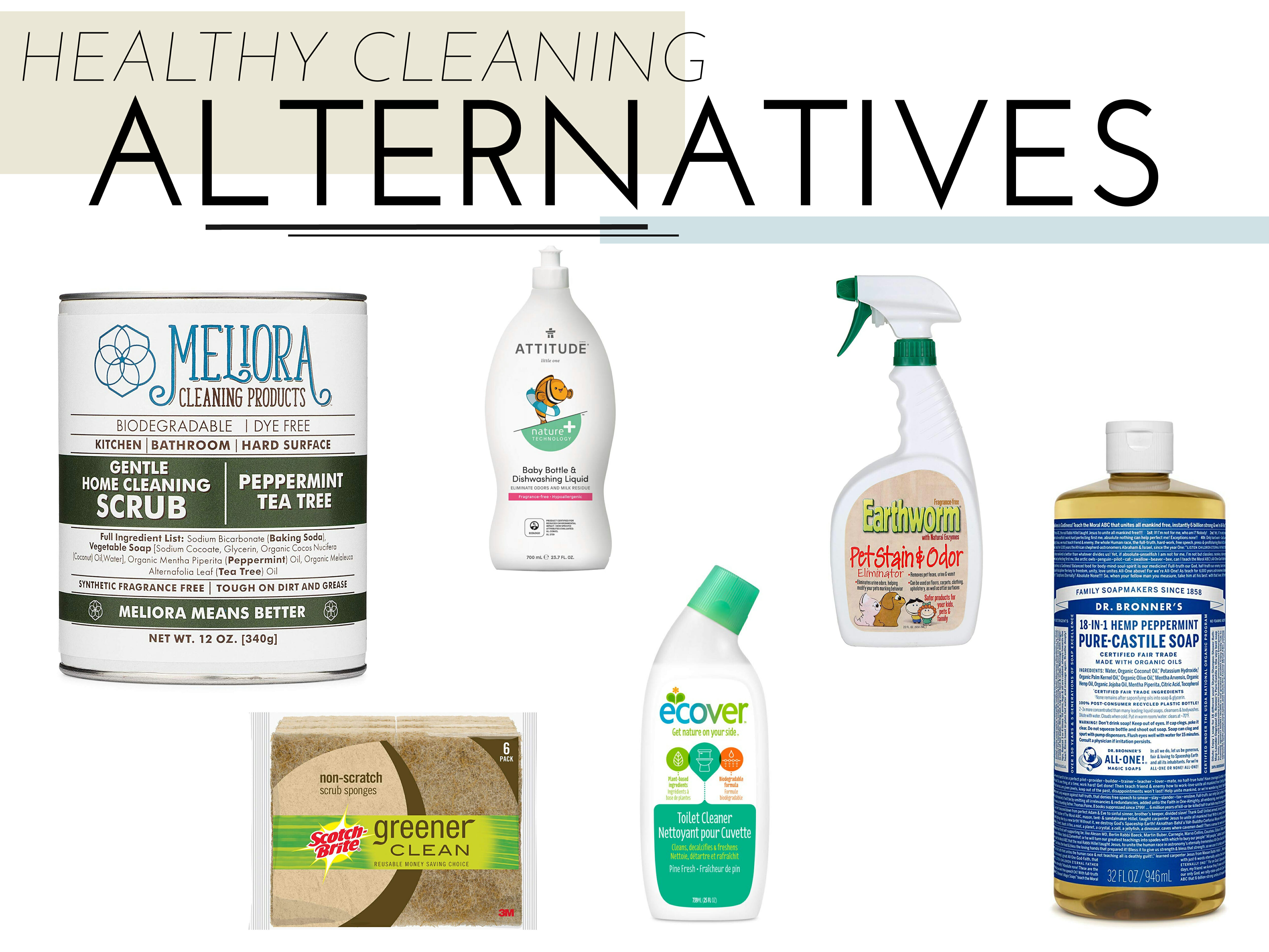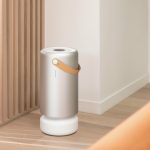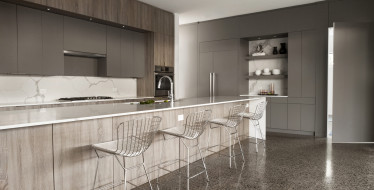In some ways, designers have the easy job when it comes to healthy design. We make decisions about what materials to use, what kind of lighting to put in one’s space, and how many plants to spread throughout the home. Once the decision has been made, approved, and implemented, that’s it — we’ve created an environment meant to reduce stress and increase overall wellness.
Once we’re done with a project, however, that’s when one of the most important elements of healthy design comes in — maintenance. The products we use to maintain our spaces, AKA cleaning supplies, can make or break the healthiness of a home. We, as designers, can only recommend which chemicals to be aware of, but it’s the space’s occupants who must be disciplined in the products they use on a daily basis.
INTERACTING WITH CHEMICALS
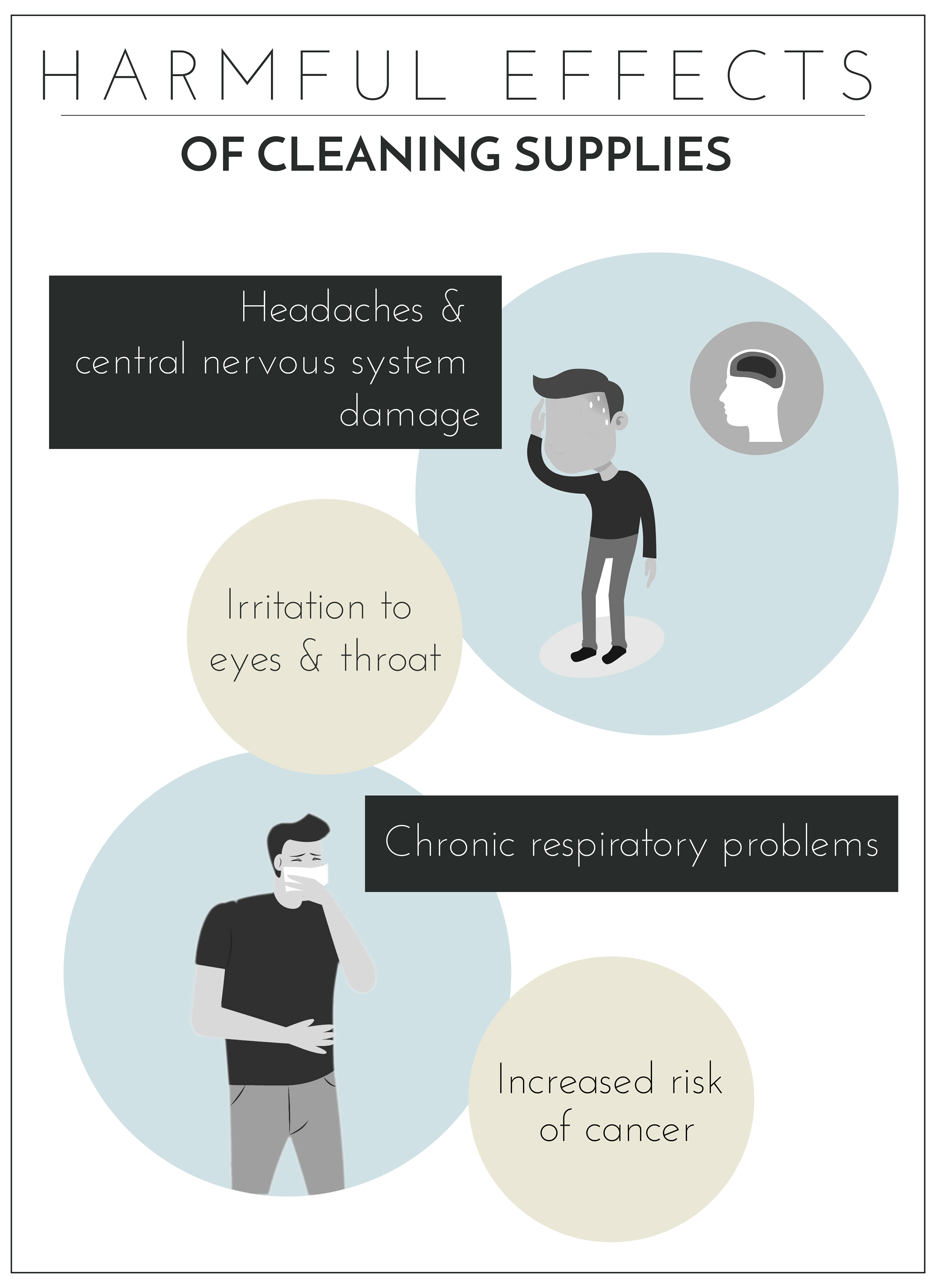 Any time one inhales the eye-watering smell of their bathroom bleach, touches the window cleaner as it seeps through the paper towel, or eats off a plate cleaned by their super-powered dishwashing pod, they’re consuming the chemicals released by the given product. That’s why, if wanting to maintain a healthy space, the cleaning products used are extremely important.
Any time one inhales the eye-watering smell of their bathroom bleach, touches the window cleaner as it seeps through the paper towel, or eats off a plate cleaned by their super-powered dishwashing pod, they’re consuming the chemicals released by the given product. That’s why, if wanting to maintain a healthy space, the cleaning products used are extremely important.
In addition, because interior spaces are typically enclosed, they have relatively poor air circulation and filtration. Consequentially, chemicals released by household products linger in a space. While plants and air purifiers can assist in cleaning the air, the best way to avoid harmful chemicals is to not introduce them into the space’s atmosphere.
WHAT TO LOOK FOR
Ammonia and bleach are common, harmful ingredients found in cleaning supplies. Thankfully, these products are easy to avoid as the two chemicals are usually highlighted on the label or listed under the product’s ingredients (look for ammonium chloride for ammonia).

It’s not as easy, however, to identify which ingredients emit dangerous chemicals called volatile organic compounds (VOCs), even though these are extremely common in everyday cleaning supplies. In fact, when the University of Washington studied 25 popular, scented household products (air fresheners, laundry detergents, disinfectants, dish detergents, all-purpose cleaners, soaps, etc.), they identified over 133 unique VOCs, 24 of which were classified as toxic or hazardous under at least one federal law, and yet only one was listed under the corresponding product’s ingredients.
If there’s 133 unique VOCs in just 25 popular products, one can assume many more exist given all the types of household cleaning products there are on the market. And if nearly all of those products omit VOCs under their ingredients, how would any consumer be able to make an informed decision about the products they’re buying? Don’t worry, it’s not as daunting as it seems.
HEALTHY ALTERNATIVES
As people become increasingly more aware of the harmful chemicals in everyday cleaning supplies, consumers have created a high demand for natural solutions. And, as you can imagine, companies who supply these products are more than happy to loudly advertise their healthy alternatives.
Because this demand for natural, or organic, supplies has rapidly increased, consumers should still apply a critical eye to a product’s ingredients. Some companies advertise as “green” but that doesn’t mean the chemicals are VOC-free or natural. A good rule of thumb is if you can’t pronounce the ingredients in a product, it’s best to leave it on the shelf.
Another alternative people have turned to is making their own solutions. While not emitting the pleasant smells of Tropical Breeze or April Fresh, people can take comfort in knowing the exact ingredients being used throughout their space.
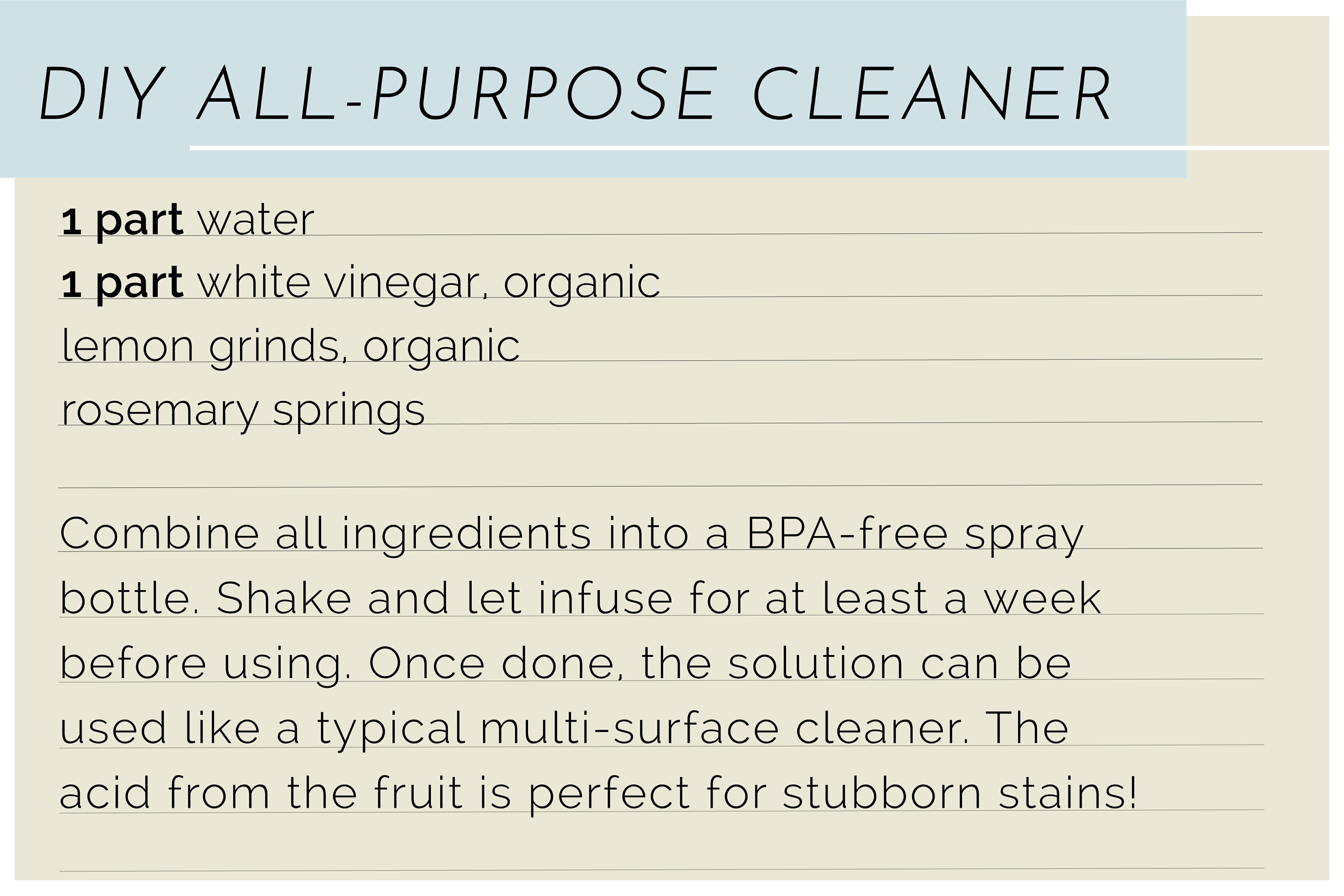
There are many things designers can do to help you improve the healthiness of your space, but this responsibility is on you. But that’s ok, because we know you got this!


